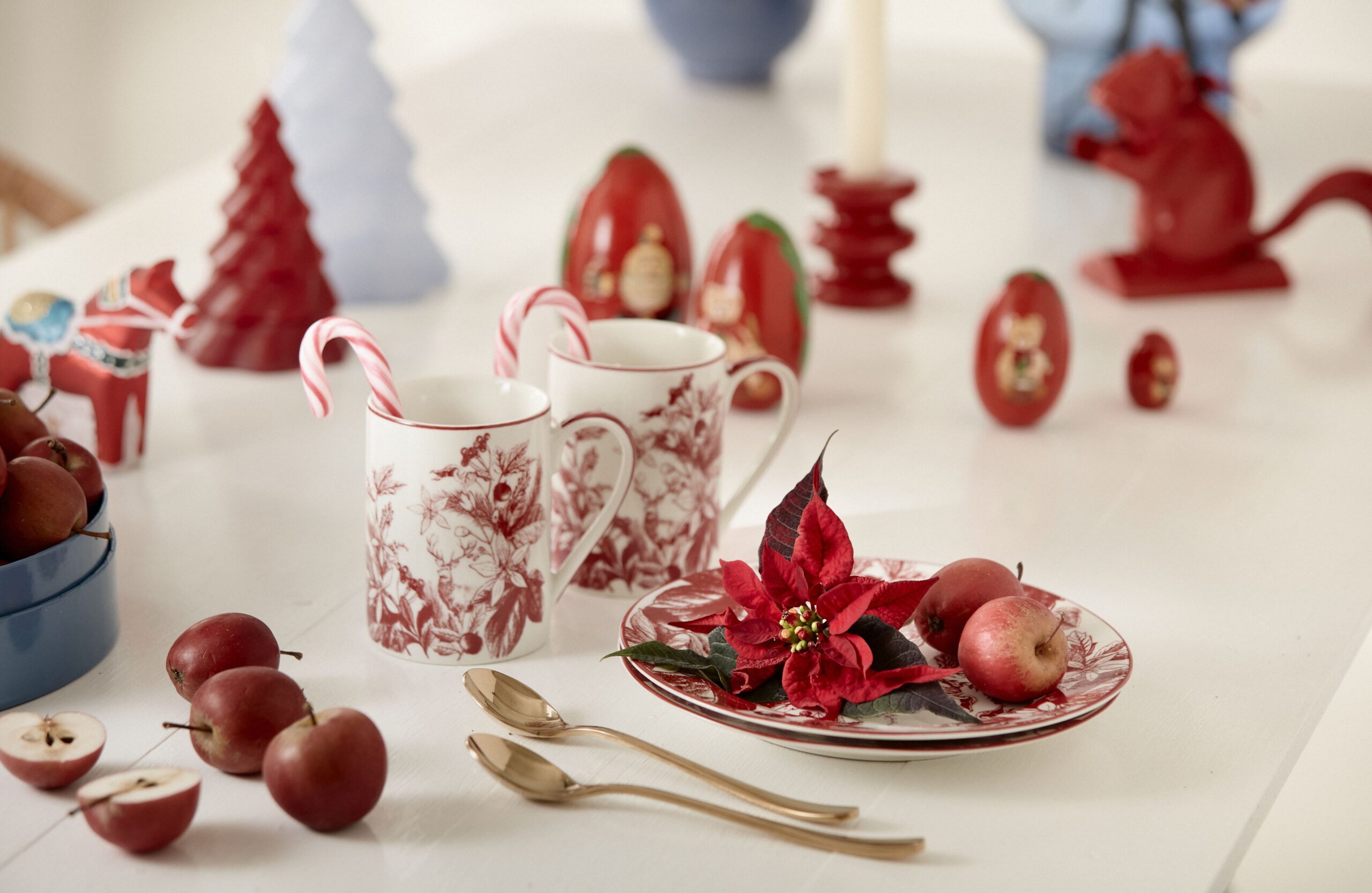We delve into the Retail Week 2024 Christmas Forecast for deeper insight into how the all-important golden quarter will pan out for Britain’s retailers at a time when consumer spending is undoubtedly challenged.
Retailers such as Pandora have seen “is a shift where customers in lower spending brackets are reducing their purchase frequency [which] indicates a volume game rather than trading down when making purchases. Certain consumer demographics are undergoing greater financial pressure, however, with ‘aspirational millennials’ experiencing higher mortgages and other loan rates which are curbing their discretionary spending. This is likely to have a negative impact on luxury brands such as Burberry, Canada Goose and Gucci, which all issued profit warnings this year.
On the upside, come 69% of this group say they will pay more to shop with the brands they are loyal to, according to Marigold’s European Consumer Trends Index 2024, which surveyed 7,343 consumers from across Europe. Julian Beer, store director at London department store Liberty, has a positive outlet for Q4, saying: “We’re witnessing a consistent growth in spending among our customers year on year, indicating a positive trend for Christmas 2024. Footfall is also on the rise.”
One shopping trend to be aware of during the golden quarter is consumers treating themselves to “little luxuries” as a reward for their prudent spending behaviour and to help them maintain an element of “control” as major global events continue to drive negative emotions. These indulgences are often seen as the only thing that makes people feel a form of happiness to counteract the ongoing crises and to find some semblance of control.”
Research Nightingale and Ocado Retail surveyed 2,000 UK adults in January 2024, finding that 48% of Brits intentionally look for good deals and then buy little luxuries as a form of retail therapy, with 84% admitting to purchasing small treats when grocery shopping. Pandora has also noticed “a spike in special treat and sentimental purchases during tough economic times”.
Ocado research released in February highlights how UK consumers shop supermarkets, with 83% actively seeking good deals on everyday groceries and 57% looking to make savings through cheaper own-brand products and everyday essentials. This allows them to justify adding ‘little luxuries’ to their baskets.
Online market
Online retail now accounts for just over a quarter of all retail sales in the UK (26.2% as of May 2024), according to the Office for National Statistics, but during peak trading this percentage goes up. In November 2023, online took a 30.7% share of the market, showing the importance of having a robust ecommerce offer ready for the Christmas consumer.
On the other hand, figures from data insight specialist IMRG, found that ecommerce revenue declined -10% year on year in 2022 and -3% in 2023, with 0% growth forecast for 2024. January to April 2024 online retail sales were down 4.7% compared to the same period last year. IMRG expects Black Friday deals to come early once again to encourage pre-Christmas spending. Black Friday falls on what will be payday for many consumers this year, the last working day of the month, November 29, and closer to Christmas than last year.
Nearly a fifth of consumers started buying Christmas gifts in October 2023 according to Barclays, prompting retailers such as Amazon to hold promotional events in that month. December 2023 was a bumper month for supermarkets as 488mn consumers (12mn more than in 2022) shopped there, resulting in a record £13.7bn of sales from an average household of £477 during the month, an all-time high.
The Fragrance Shop also had a 6.5% year on year rise for the 13 weeks to 30 December, 2023, driven by new fragrance launches and “key range extensions, a compelling gift set collection, and a strong showing of seasonal favourites”. Fine wine sales rose by more than 13% year on year over the two months to Christmas according to Majestic as “customers traded up to treat their family and friends”.
Things look a lot rosier for fashion in 2024, with Next and Sosandar amongst those posting strong results this year. The sector as a whole is forecast to grow 1.9% year on year by value and 2.4% by volume. The pre-loved market can expect a boost but luxury fashion brands continue to face tougher headwinds as affluent households struggle with high mortgage costs. Ebay became the latest marketplace to ditch seller fees for fashion in the UK as of April 2024, following in the footsteps of Depop, which dropped its 10% seller fee in March, giving the platforms further appeal to eco-conscious shoppers.
Health and beauty
Health and beauty is expected to be one of the strongest performers in the final quarter of 2024 with sales values forecast to increase by 2.8% on last year, with volumes rising by 0.3% off the back of an expected 2.5% inflation level in the market. Social Media platforms, especially TikTok, are continuing to disrupt this market, offering major opportunities for challenger brands. According to Retail Economics, a net 15% of consumers expect to spend more in this category in the lead up to Christmas, with people eager to treat family and loved ones with treats over functional gifts. Research from both Mintel and Boots found that “natural skincare” tops the wishlist in this category for both brands and consumers.
Happy Homewares
Homewares sales are expected to rise by around 2.5% in value year on year in the final quarter of 2024, compared with a 2.8% drop in values last year. Volume growth is expected to reach 3.4% as retailers pass on cost savings to consumers driven by deflation in imported products, which could be a factor in encouraging sales for a sector that isn’t traditionally associated with a sales boom in Q4.
The success of this sector is closely aligned with the health of the housing market, so the squeeze on housing affordability is set to undermine demand for big-ticket items. On the other hand, many consumers will embrace an ‘improve, don’t move’ mentality, rejuvenating interiors with lower price point products such as cushions, soft furnishings, curtains and blinds.
The Cotswold Company ranked sixth in Retail Week’s Christmas league trading table 2023, with like-for-like sales increasing by 10.5% in 2023 compared to 2022. Investment in its showrooms was one of the reasons given for the growth, but investments online, where 80% of its sales are generated, helped reduce the bounce rate by 9% and increase conversions by 3%.
The company’s Matt Pollington said: ”Rather than trading down, customers are placing increasing value on how products are made and what it’s made from. Customers continue to prioritise the quality, durability, and longevity of their homewares over throwaway culture’. And as we’ve seen over the past six months, customers continue to prioritise the quality, durability, and longevity of their homewares over throwaway culture.”
There’s optimism for the wider sector year-round, according to B&Q head of outdoor and seasonal Mairi Devlin. “We’ve seen a trend for decorations not just being for Christmas,” says Devlin. “For example, we’re seeing more outdoor seasonal lighting staying up all year round. Cluster lights have become a best seller as they add a twinkle and ambience to your garden (or inside your home) that does not need to be limited to the holiday season.”
B&Q research conducted between November 2023 and February 2024 suggests over half (57%) of customers now buy small decorative things for their homes every couple of months, with popular categories being seasonal home accessories such as cushions and candles. The research formed part of the retailer’s The Way We Live Now report, which took data from 48 in-depth UK home visits and surveys and interviews with 3,000 people.
The electricals market has been challenged for a prolonged period and that looks set to continue in Q4 2024, although there will be a significant improvement on the 5.2% decline in the value of sales reported a year before. The furniture and flooring sector looks set to be the worst-performing category this golden quarter, with difficulties owing to the high cost of products, a challenging housing market and consumer caution to spend on big-ticket purchases prevailing.
Last year brands such as Ikea focused on price cuts across the board – tactics we can expect to see replicated this year amid another challenging environment. Supply chain disruption in the Red Sea is dragging into a year and shipping costs have rocketed in the past few weeks, causing trepidation among retailers, particularly those selling furniture, homewares and white goods.
Toys and games
The toy market remains incredibly competitive and driven by innovation from global brands, which means we should see spending concentrated across fewer retailers, which will come at the expense of independents.
Toys and games sales by value are expected to rise by around 2.1% year on year in Q4 2024, as a recovery in spending power helps support growth in this area. Lower consumer prices compared with 2023 will likely filter through to consumers as import deflation is passed on, hence why the growth is half of that experienced one year ago. Based on these factors, volume growth is expected to be in the region of 2.6%, with the market a defensible part of spending during the festive period as consumer spending power sees a modest recovery and parents prioritise gifting for children.
With no new consoles forecast for release this peak period, toys are expected to win out on Christmas lists. And the ‘kidult’ market is expected to remain prevalent; according to data from market research firm Circana, kidults (12+) in Europe spent £1bn more on toys and games for themselves last year.
Last year saw Toys R Us return to physical retailing after the ecommerce website reopened the previous year, following the business’s collapse into administration in 2018. The retailer opened nine initial ‘store-in-store’ spaces within WHSmith branches and has committed to a further 30 to be opened in time for the peak Christmas 2024 season. The rollout of Toys R Us to more locations is part of WHSmith’s emphasis on highly disciplined space management to maximise returns.
While the DIY and gardening sector is likely to remain under pressure in the final three months of the year, inflation of 1.9% in the sector looks set to help sales values push up by 1% compared to 2023, when the sector experienced declines of 5.3%. Volumes are likely to fall on the previous year by around 0.9%, and this comes after large players in the market, such as Kingfisher, released challenging results in recent trading periods, including some warning on profits.
Last year, some big names experienced a disappointing festive period, including Topps Tiles which reported a 7.1% decline in like-for-like sales in the quarter to 30 December, versus the same time period in 2022. Challenges weren’t universal across the board for Christmas 2023. Homebase’s chief executive Damian McGloughlin described “bumper Christmas sales” when talking to Retail Week in February. Broadly speaking, however, the retailer reported heavy annual losses – reflecting trends seen in the sector. In its full year results to January 2023, it recorded a £84.2m loss from a profit of £30m the year before, but says it’s on track to deliver double-digital profits in 2024.
The Horticultural Trades Association reported Christmas sales across garden centres to be down 7% for December 2023, versus 2022, as measured by the HTA Garden Retail Monitor. Consumers bought items such as Christmas trees earlier last year, with a 7% rise in real tree sales in November 2023 year on year.
The association commented on the competition presented over Q4 2023 by discount retailers selling artificial trees, lights and decorations, which may have taken market share in the tough economic climate. While not solely down to sales of Christmas items, both B&M and Poundland reported like-for-like sales growth over the festive quarter 2023 (B&M 5% growth year on year to 23 December; Poundland 0.9% growth to 31 December).
Once again this year, a weaker housing market, interest rates remaining at peak level, and a lower level of housing transactions could undermine demand across the industry for big DIY and garden projects, although – like homewares – the improve, not move trend will counteract some of these pressures as homeowners take on smaller projects to freshen up their homes, as they enter a new cycle of improvements following the pandemic bump four years ago.
Own-brand product
Own-brand ranges took centre stage last Christmas and played a key role in driving growth for retailers across categories including food and beauty. Boots relaunched its Natural Collection in time for this year’s Golden Quarter – hitting two customer desires with value price point and natural product
Following in the footsteps of the successful performance of Aldi and Lidl’s premium own-brand ranges at Christmas, Asda launched Exceptional by Asda in May to “elevate” its premium-tier offer. With 500 new products across multiple categories set to be on the shelves in the coming months, it will be well established by the festive quarter.
WHSmith announced its first own-brand food-to-go range in May, too, Smith’s Family Kitchen, initially launched in UK travel stores. Consumer demand and feedback have been pivotal to the launch – with over 1,000 shoppers consulted on the branding, design and packaging and vegetarian and vegan options added. A Christmas specific range could very well be a winner for the brand.
Beauty budget own-brand ranges outperformed in a space that has historically been brand-led, especially at peak period. Boots’ No7 and Superdrug’s Studio London became the highest-performing ranges at these companies, respectively as consumers sought cost-effective goods in a saturated market. Much of this can probably be attributed to rising inflation at the time, but as we highlighted in the previous chapter about Boots’ re-launched Natural Collection, own-brand has carved a new space for itself at peak trading and the trend could continue.
Marketing messaging
IMRG data on the types of Black Friday deals most often run by retailers shows that discounts using the phrasing “selected products up to” a certain price is the go-to lever retailers are leveraging to encourage shoppers to purchase. It dipped slightly (to 43% of retailers using this tactic) in 2023 but is by far and away the most regular marketing technique at this time of year.
Whilst Christmas PR campaign preparation and product sampling comes a lot later in the year than it used to, Black Friday sales periods are likely to continue to elongate and run through November. Retailers are encouraged to maximise the opportunity and publicising their offers in advance so consumers know what to expect.
Throughout the festive period, consumers are most likely to engage with messages containing “discounts and coupon codes, loyalty programme promotions, sale/holiday promotions and offers”. All the above present great opportunities for personalisation and individualisation on a customer level, according to Gkolfinopoulou.
Different stages in the customer journey require unique offers and content to be truly compelling. “Instead of sending out promotions to everyone, retailers should identify the different stages in their customers’ journeys and develop appealing offers and sequences for each stage,” Gkolfinopoulou advises. “This may require more effort initially, but it will help reduce the frustration that arises from irrelevant content and offers, which more than half of consumers experience.”
Featured image: Stars for Europe

















